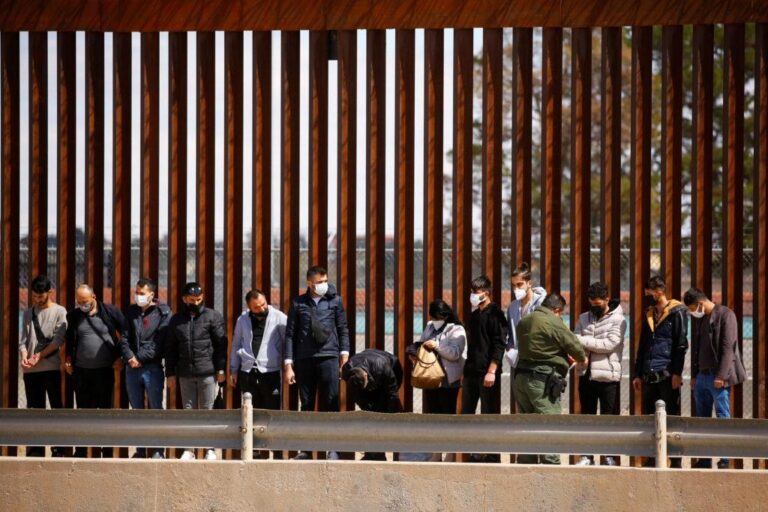The politics of immigration along the US-Mexico border manifest in complex and varied ways, reflecting the distinct social, economic, and cultural dynamics of border communities. Nowhere is this more evident than in San Diego, where local perspectives on immigration policy diverge sharply from those found in other border regions. As debates over border security and migrant rights intensify nationwide, the San Diego area offers a unique lens through which to examine how political attitudes and policy priorities evolve in response to the tangible realities of life on the front lines of immigration enforcement. This article explores the nuanced political landscape surrounding immigration in San Diego, highlighting key factors that shape the discourse and influence governance in one of the nation’s most pivotal border cities.
Politics and Immigration Dynamics Vary Across the US-Mexico Border
The political landscape along the US-Mexico border is anything but uniform, influenced heavily by local demographics, economic dependencies, and historical factors. While San Diego embraces a binational economy that thrives on cross-border cooperation, other border towns wrestle with concerns over security and immigration enforcement. These contrasting priorities shape the way local leaders and constituents approach immigration policy, often driving a wedge between neighboring jurisdictions.
Key factors influencing regional political dynamics include:
- Economic Ties: Areas with robust trade and tourism often advocate for more flexible immigration policies to sustain local businesses.
- Security Concerns: Communities facing higher rates of illegal crossings push for stricter border enforcement and enhanced federal presence.
- Community Composition: Regions with larger immigrant populations tend to support comprehensive reform and humanitarian approaches.
| Border Area | Primary Focus | Local Political Stance |
|---|---|---|
| San Diego, CA | Binational Economy | Pro-immigration reform, cooperation |
| El Paso, TX | Community Safety | Balanced approach, cautious enforcement |
| Nogales, AZ | Border Security | Stronger enforcement, federal partnership |
San Diego’s Border Challenges Reflect Local Economic and Social Realities
San Diego’s proximity to the US-Mexico border makes it a unique case study in how immigration politics intersect with local economic and social frameworks. Unlike other border regions, San Diego experiences a complex blend of challenges rooted in its diverse economy, which includes sectors like tourism, international trade, and technology. These industries rely heavily on cross-border cooperation, making enforcement policies a delicate balancing act between security and economic vitality. Additionally, the city’s demographic makeup—characterized by a significant Latino population and a longstanding cultural exchange with Tijuana—shapes public attitudes and responses to immigration legislation and border management.
Key factors influencing San Diego’s border dynamics include:
- Binational Workforce: Many San Diegans commute daily across the border for work, facilitating a cross-border labor market that bolsters local businesses.
- Humanitarian Concerns: Migration flows bring pressing social services needs, prompting coordinated efforts among local nonprofits and government agencies.
- Security Measures: Increased border patrol presence and infrastructure development impact community relations and economic activities differently than in other border cities.
| Economic Sector | Border Impact | Community Response |
|---|---|---|
| Tourism | Cross-border visitors form a significant income source | Support for streamlined travel and cultural events |
| Trade & Logistics | Delays affect supply chains and businesses | Advocacy for infrastructure improvements |
| Technology | Relies less on physical crossing but values stable policies | Push for policy predictability and skilled immigrant talent |
Community Voices Shape Policy Approaches on Both Sides of the Border
Local perspectives are shaping immigration policies with distinct priorities and challenges on either side of the border. In San Diego, community groups emphasize the importance of humanitarian support and economic integration, advocating for expanded access to social services and labor protections. Meanwhile, voices from Tijuana highlight the need for collaborative cross-border security and sustainable development initiatives that reflect the realities faced by border residents daily.
Key themes emerging from public forums and grassroots organizations include:
- Enhanced legal pathways to reduce unauthorized crossings while protecting migrant rights
- Binational cooperation on health, education, and infrastructure to address shared challenges
- Community-led policing efforts intended to build trust rather than foster fear
| Community Priority | San Diego Focus | Tijuana Focus |
|---|---|---|
| Security | Crime prevention with community engagement | Coordinated cross-border patrols |
| Economy | Job access and worker rights | Local entrepreneurship support |
| Social Services | Expanded health care for immigrants | Access to education and housing |
Targeted Recommendations for Sustainable and Humane Immigration Solutions
Addressing immigration challenges along the US-Mexico border requires tailored policies that balance enforcement with compassion. Sustainable solutions emphasize collaboration between federal, state, and local entities to create pathways for legal entry while protecting human rights. Community-based programs aimed at integration, education, and economic inclusion reduce tensions and foster long-term stability on both sides of the border.
Key components for humane immigration reform include:
- Streamlined visa processes that reflect realistic labor market needs
- Enhanced asylum procedures ensuring swift and fair evaluations
- Investment in border infrastructure for efficient, safe crossings
- Expanded support systems for migrants, including healthcare and legal aid
| Policy Area | Current Challenge | Recommended Strategy |
|---|---|---|
| Border Security | Backlogs and unsafe crossings | Smart technology and community patrols |
| Asylum Processing | Lengthy wait times | Increased staffing and remote hearings |
| Integration Support | Lack of access to services | Partnerships with NGOs and local governments |
In Retrospect
As the debate over immigration continues to shape national discourse, the nuanced realities along the US-Mexico border underscore that there is no one-size-fits-all approach. San Diego’s experience highlights how local perspectives and political dynamics differ significantly even among neighboring border communities. Understanding these distinctions is crucial for policymakers seeking effective, empathetic solutions. The politics of immigration on this frontline remain as complex and varied as the communities they affect, demanding ongoing attention and informed dialogue.







